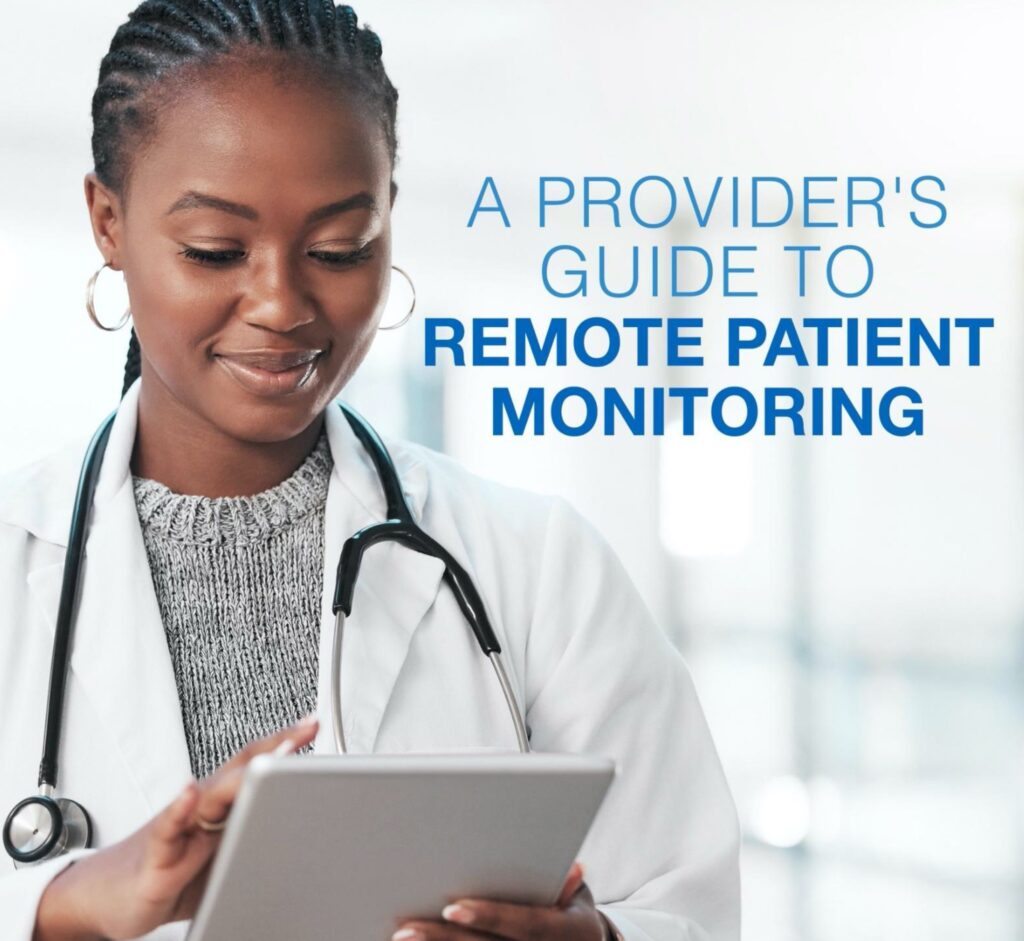While healthcare providers acknowledge the value of remote patient monitoring, many have found it difficult to establish a successful RPM program. TriageLogic recently published an RPM ebook that outlines the common reasons why providers may experience setbacks with implementation, along with the steps they can take to overcome them. These solutions have been shown to reduce medical expenses, offer income to providers in the form of reimbursements, and greatly improve patient health outcomes.
What Is RPM?
Remote patient monitoring (RPM) is part of a new era of remote medical services and technology. Most remote patient care takes place over the phone or a two-way video. RPM goes one step further by helping doctors regularly collect and evaluate patient data using electronic medical devices. These RPM devices track patients’ vitals like blood pressure, glucose, and pulse ox, and relay this data back to their providers for review. At minimum, a successful RPM program depends on having the right amount of reliable RPM devices, as well as enough staff to monitor recorded data, identify when devices are being used improperly, and notify patients when symptoms indicate possible medical concerns.
The Case for Implementing RPM Technology
The main reason that remote patient monitoring was developed was to improve a provider’s ability to catch changing vitals in chronically ill patients. Some changes may be sudden, or happen between normal patient follow-up appointments, or simply be undetectable until it’s too late to respond. RPM serves as an early warning symptom that enables providers to intervene even before patients experience troubling symptoms.
Considering how much money is required cumulatively to treat patients with chronic disease, and the fact that six in 10 Americans suffer from at least one type, it should come as no surprise that a successful RPM program can offer substantial benefits to patients and the healthcare system. For providers, this means insurance companies are now open to reimburse them for remote patient care.
Challenges for a Successful RPM Program
While this technology offers greater visibility over the changing health of chronically ill patients, RPM isn’t without its own challenges. Those can range from RPM vendor selection to properly billing for RPM. One of the biggest issues we’ve seen is the ability to manage and respond to the regular influx of health data.
That’s why we have expanded our nurse telephone and telehealth triage services to include data review for remote patient monitoring. When healthcare providers want to outsource this service, we will put them in touch with an established RPM partner. That partner will provide the number of needed devices for the provider to administer, while we will review health data from those devices through our call center of registered nurses. Our RNs go through a strict hiring process to verify their knowledge and capabilities when it comes to patient symptom evaluation, allowing them to identify when RPM readings are enough of a concern to warrant notifying the provider and the patient. Nurses also use device-specific and disease-specific protocols to evaluate patients.
You can learn more about the other common challenges that providers face with a successful RPM program, as well as their solutions, in TriageLogic’s RPM ebook.
The Future of RPM
As more healthcare providers adopt this technology, their patients will experience greater health outcomes. Charu Raheja, CEO of TriageLogic, understands firsthand what a powerful effect this can have. She states,
When my father passed away from a massive heart attack in 2009 because he did not call a healthcare provider to evaluate his symptoms, our mission became that much more important to me. I could see … how providing remote health care … to address [patients’] symptoms could save lives.
Implement Your RPM Solution
Providers that are interested in creating a successful RPM program are encouraged to download TriageLogic’s ebook. Those who wish to partner with us for our outsourced RPM data review can contact us directly, either by calling us at (800) 723-4290, or through our contact form here.
About TriageLogic
TriageLogic is a URAC-accredited, physician-led provider of top-quality nurse telehealth technology, remote patient monitoring, and medical call center solutions. Founded in 2007, the TriageLogic Group now serves more than 9,000 physicians and covers over 25 million lives nationwide.





